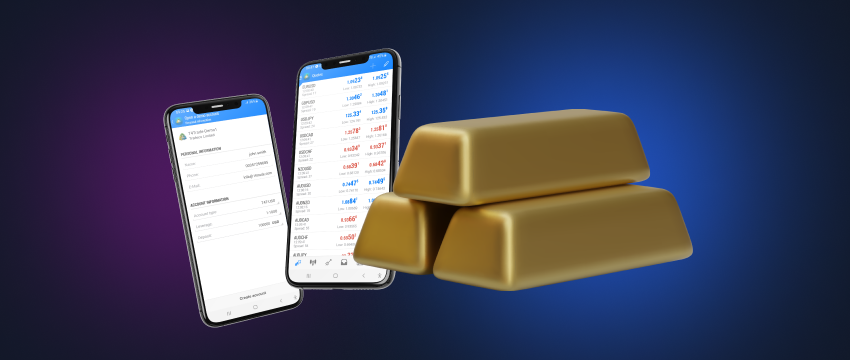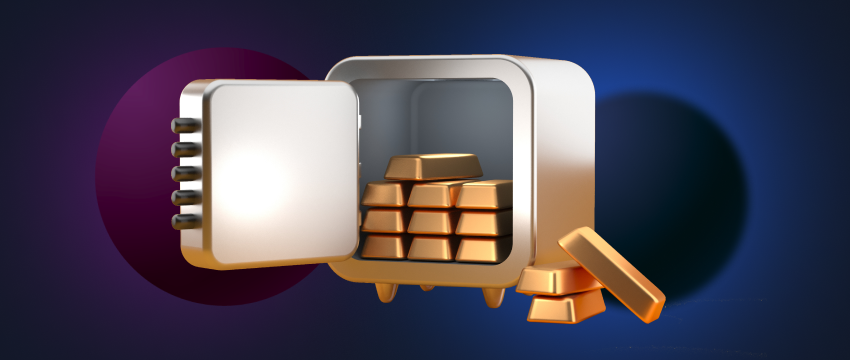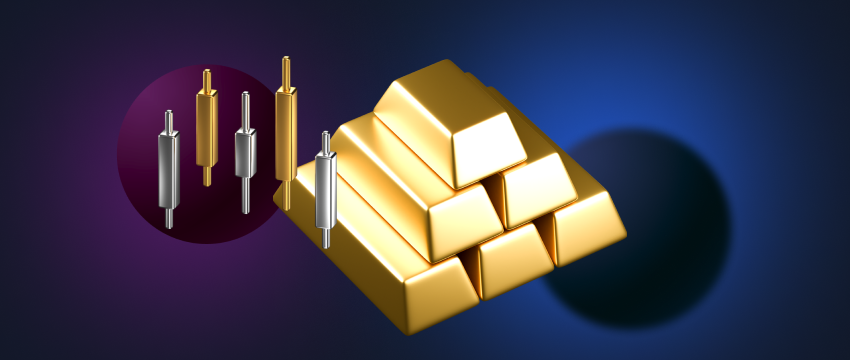Trading metals is appealing to many global traders. It can be a great way to diversify your trading portfolio and has the potential to become a key component of a strategic investment strategy. Of course, this is provided you have an effective trading plan in place.
Variety of metals
There are a variety of metals that a trader can take a position on, be this gold, platinum, silver, copper, etc. Metals are typically categorised into precious metals or industrial (base) metals. The most popular precious metals are gold, silver, and platinum. These are most frequently used as a currency or for making jewellery but also have a range of other applications.
Precious metals are usually rare and have inherent value. Some, e.g., gold, are considered safe-haven assets, i.e., stores of wealth during periods of market instability (e.g., during the war). In contrast, industrial (base) metals are usually common metals like lead, nickel, steel, aluminium, or zinc that are widely used in industrial or commercial applications like construction and manufacturing. The price of metals is typically impacted by market or investor sentiment (supply and/or demand), war, geopolitical instability, etc. This makes metals a highly volatile commodity.
How to trade in precious metals
With award-winning broker T4Trade, you can trade CFDs (Contracts for Difference) on metals like gold, silver, platinum, and palladium. Gold is probably one of the most popular metals offering high liquidity and trading CFDs allows significant leverage and measured risk. With CFD trading, you can take a long or short position on the price of metals and sell CFDs on gold and silver with competitive spreads. With T4Trade, you can trade CFDs on metals on MetaTrader 4, one of the world’s most popular trading platforms, or by using Webtrader, a 100% web-based platform that provides full functionality via a user-friendly interface.

What are CFDs?
Contracts for Difference are financial instruments (agreements between a broker and a trader) that enable an individual to trade metals without having to own the underlying asset. Through the CFD, a trader will speculate on the price of the underlying metal rising or falling. Based on their speculation, they will either go long or short. CFDs are highly leveraged though which makes them highly risky. While leverage may increase the potential for profit in that the trader only needs to invest a fraction of the value of the trade, it can also expose a trader to significant losses if metal prices move in an adverse direction.
How do I become a CFD metal trader?
There are several steps to follow if you are only at the start of your metals trading journey. Let’s walk through them.
7 steps to start metals trading journey
Select a broker – Step 1
- The first step is to select a broker that offers CFD trading in metals. Do thorough research to ensure you pick a broker that comes well-recommended and is preferably regulated.
Create a demo account – Step 2
- Once you’ve found a broker you like, the second step is to sign up for a demo trading account to put your trading skills to the test. Use the demo trading account to practice how to trade metals, and measure performance to identify strengths and weaknesses in your CFD trading strategy. Once you’ve built up the expertise and confidence to move to a live trading account, you can then proceed to the next step.
Create a live account – Step 3
- Step three is to move from a demo trading account to a real live account with your selected broker. Ensure the broker offers a range of different accounts to suit your specific trading needs. Also, establish the amount of funds you’ll need to deposit into your trading account in order to start executing trades.

Choose the metals – Step 4
- Step four entails choosing the metals you want to trade via CFDs. These are typically listed on the broker’s platform.
Market Analysis – Step 5
- Analysing the market before opening positions is the all-important step five. This involves performing technical and fundamental analyses such as studying price charts, global economic and political news, and financial indicators, that can impact metal prices.
Start trading – Step 6
- Once you’ve performed the necessary analysis to be able to make informed trading decisions, you can move on to step six which is to place your trade. As we’ve already mentioned, in CFD trading, this means going long or short depending on how you anticipate metal prices to move. This step also involves specifying the size of your position and implementing proper risk management measures to safeguard your funds.
Monitor your trading movement – Step 7
- Step seven involves monitoring your trades to better manage risk and the exiting of any trades should the need arise. Remember though that monitoring never ends. There will always be a need to monitor the markets so using a tool like an Economic Calendar may be very useful in achieving this goal. T4Trade’s real-time Economic Calendar can be a useful part of your arsenal to ensure you achieve your trading objectives.
Managing the risk that comes with being a metal trader
While metal CFD trading can be very lucrative, it does involve an incredibly high level of risk due to the leverage component. Yes, trading metals offers portfolio diversification and a hedge against inflation, but it also comes with a group of risks that can see you losing all your money at the drop of a hat.
So how then does one safeguard their capital to achieve a relatively good measure of success? Well, creating a risk management plan that establishes the rules and criteria by which you should trade is key. So, what are the key components of an effective plan of this sort?
Risk management plan
For one, a risk management plan must specifically define your metal CFD trading objectives. You must be definitive. Unless you know what you’re trying to achieve, you’ll be trading blind and that’s a recipe for disaster. In addition, ensure the plan aligns with your trading style and your tolerance for risk. It’s pointless executing a risk management plan that is highly aggressive if you don’t have the trading psychology or budget for it. Ensure the proper stop loss and take profit orders are set to mitigate risk and protect your capital.
A risk management plan must ensure that you carve out time every month to commit to ongoing learning, and time every day to monitor global news. The financial markets are constantly evolving for a host of reasons. Economies rise and fall, and the threat of war somewhere is never far off. Technologies are also advancing all the time. This means you must stay abreast of it all to ensure optimal trading performance. As far as education is concerned, read books and blogs, watch videos, listen to podcasts, and participate in webinars and seminars. As far as current affairs are concerned, listen to and read the news, follow economic calendars, and remain vigilant.
Finally, remember to actually stick to the rules of your plan. Don’t trade based on greed fear or impulsiveness. These emotions will inevitably lead to poor trade performance and put your capital at risk.

Trading with T4Trade
Traders worldwide seek out T4Trade for the flexible CFD trading experience it offers, fast withdrawals and deposits, flexible leverage, and quick execution. T4Trade also provides its traders with exclusive resources to optimise their skills and gain more trading proficiency. A multi-lingual support team is also on hand 24/5 via email, telephone or live chat to help traders across the globe with any queries they might have.
Disclaimer: This material is for general informational & educational purposes only and should not be considered investment advice or an investment recommendation. T4Trade is not responsible for any data provided by third parties referenced or hyperlinked, in this communication.



